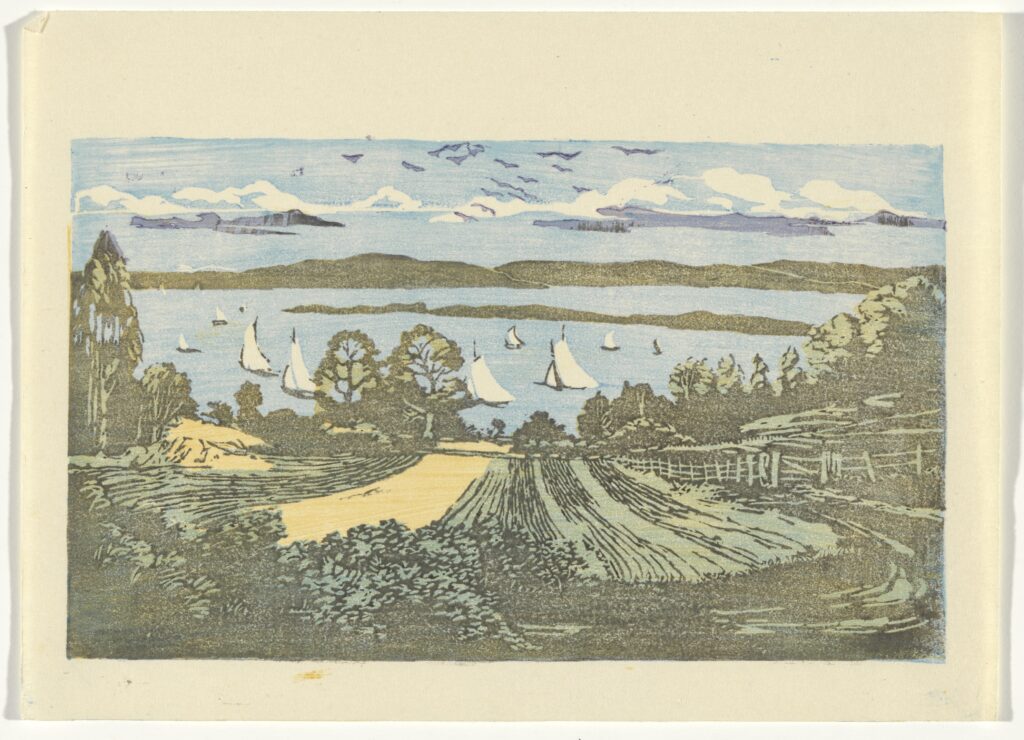Australasian Modernist Studies Network 2024 Conference
AMSN6: Modernism and modernity at the edge
University of Tasmania, 11-13 December 2024

The present can feel like an endless series of crises on the brink: the limits of democratic processes, prosperity, and social cohesion are being tested by political polarisation, disinformation, hyperconnected media, neoliberal financialisation, and rising global temperatures. At what is usually seen as the far edge of the world, our location in lutruwita/ Tasmania allows us to think eccentrically about what it means to be at or on the edge – whether geographically, spatially, socially, temporally, or aesthetically. Scholars and critics thinking about Australia in twentieth-century cultural history have pondered the tyranny of distance, cultural cringe, and the provincialism problem. Accounts of Australian modernism frequently reference Australian writers and artists’ perceptions of their own marginality to modernism, typified in the antipathy of the Ern Malley hoax, which in 2024 celebrates its 80th anniversary.
In terms of modernist studies, what do we do now, in a field that has so thoroughly broken down what had appeared as the hard borders of geography, period, and aesthetics? We might speculate if anything can still be regarded as peripheral, given we are now fifteen-plus years from ‘The New Modernist Studies’ (2008) and its identification of expansion as the key verb of modernist studies. As Paul K. Saint-Amour celebrates in ‘Weak Theory, Weak Modernism’, the expansion of the field – whose ‘new’ is no longer new – has led to a softening of the definitional edge of ‘modernism’: ‘the less sovereign a hold the central term has upon the field it frames,’ Saint-Amour writes, ‘the more ferment and recombination can occur within that field, and among more elements.’ Though we might imagine edges as sharp, firm, as denoting a point of individuation and separation, they can also be soft, crumbling, blurred, or open. An edge need not preclude an attachment. In ‘Aesthetic Education for the Anthropocene’, Thomas S. Davis asks ‘[w]hat aesthetic forms allow us to comprehend and to tell the stories of the places we inhabit and the beings with whom we share these places?’ This conference echoes Davis’s call to consider ‘the mechanisms by which we connect to things, beings and places’.
This conference calls for and celebrates the investigation, evasion, blurring, and crossing, of the limits of modernism and modernist studies, and for considerations on how at this point in history, modernist studies might find the means to form new critical, aesthetic, and disciplinary attachments. We invite proposals for individual paper presentations or themed panels on modernism and modernity, broadly defined, that respond to the following questions:
- How did modernists grapple with aesthetic, social, emotional, or intellectual breaking points in their work? What new formations are enabled by these breaks?
- What happened to aesthetic experimentation in places beyond the metropole? How does being at the geographical edge unsettle the aesthetic or intellectual claims of modernism?
- How do modernist works represent extremes – political, emotional, psychological, environmental?
- What is the relationship between modernism and avant-garde aesthetics or politics? Is modernism – or modernist studies – edgy anymore?
- How do modernist works engage with their own frames or margins? What occurs at those material and aesthetic edges?
- How should we determine the edge of modernism, in temporal, aesthetic or disciplinary terms?
- What was the relationship between experimental aesthetics and technological innovation during the long twentieth century? What parallels are there in contemporary poetics?
- What social boundaries, of class, gender, race, religion, sexuality, and nationality (among others) were explored, exposed, or exploded by modernist works? How did these works represent, celebrate, or exclude the marginal or eccentric in society?
- How is being on the edge, adjacent-to, or at the (supposed) periphery, productive of new ideas, artworks, readings, and communities? Who is at the edge of modernism?
- Are edges – alongside limits, borders, boundaries, and peripheries – critically, aesthetically, or intellectually useful?
- What is beyond modernism?
We are delighted to confirm keynote speakers Professor Thomas S. Davis (Ohio State University) and Dr Noreen Masud (University of Bristol) and a plenary panel session on Antarctic Modernisms chaired by Professor Elizabeth Leane (University of Tasmania). Further plenary events will be announced closer to the date.
Please submit proposals including an abstract of 300 words and short author biography to the conference organising committee at [email protected] by Wednesday 1 May. Panel proposals should include an abstract of 300-500 words, plus names and author bios for all presenters. Any queries should be directed to [email protected].
Conference organising committee: Naomi Milthorpe, Fergus Edwards, Robbie Moore, and Emmett Stinson (University of Tasmania).
